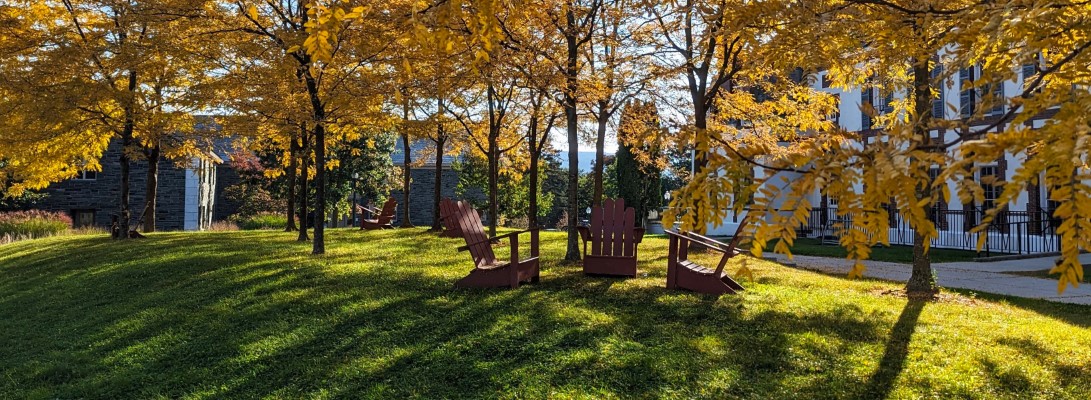After a week of pleasant weather, March has returned. Beware the Ides of March indeed-this is Vermont, and 50 degrees in March does not mean spring is upon us. Fortunately, the plants are right on time. This week in blooms, we’re seeing the first crocus coming up.
There isn’t a lot of crocus around campus. I remember planting some down by Dragone track, in the little bit of lawn surrounding a planting there. One or two are poking up out of the ground now-sped along by the surrounding warm black top. I planted a bagful of crocus in our extremely tiny front yard with my kids. I took handfuls of the bulbs, and scattered them on all sides of me. The kids walked the yard, found a bulb, and planted it pointy side up. Now they run in the house screaming when the first one appears every spring.
We have a good lawn for crocus, as we have a terrible lawn. I leave the grass lawn, and eschew weed killers not just from a deep abiding environmental standpoint but also from an overall cheapness. The crocus, after all, are weeds, at least compared to the monocot grass, and would perish under chemical applications. I read that people have a hard time growing crocus in lawns, but I disagree. Active lawn neglect gives time for the crocus to appear, flower, and let the leaves photosynthesize long enough to store sugars for the little bulb next year. Our lawn gets mown at about 3″, which is plenty of crocus leaf remaining as well. Any trace of the plant is usually gone by June.
The bulbs start appearing in garden centers in September, August if the garden center manager was really on top of his or her game. (That was very rarely me). The bulb shipments come by boat from Holland, and the first orders got on the first boat. Crocus collectors can expound on dozens of varieties, but locally you’ll probably only run into two types.
Blooming now are the smaller early Crocus tommasinianus. Later will come the larger (comparatively) Crocus vernus. These come in a broader range of cultivars, ranging from shades of blue, purple, mauve, and some strange but cool striped forms. At the Congregational church at the north end of Main Street in town are some spectacular yellow crocus, either Crocus flavus or Crocus chyrsanthus. There are ways of telling them apart, but not at 30 mph.
The bulbs (corms, to be correct) are about the size of a quarter, and have a hairy coat, called a tunic, proving botanists do have a sense of humor, or at least of language. Most crocus are native to Central and Southern Europe, down through North Africa, and across through the Middle East into China. They are in the Iridaceae family, cousins with Iris and Gladiolus. Crocus sativa is a fall blooming crocus, and the stigmas are the source of saffron. 3 stigmas per plant, so when you notice the outrageous price of saffron at the store you’ll understand. Crocus show some remarkable evolution, as seeds are developed in an ovary down below the ground, and only arise when ripened, thereby being protected from harsh weather and grazing beasts until ready for dispersal.

One thought on “Crocus poking up”